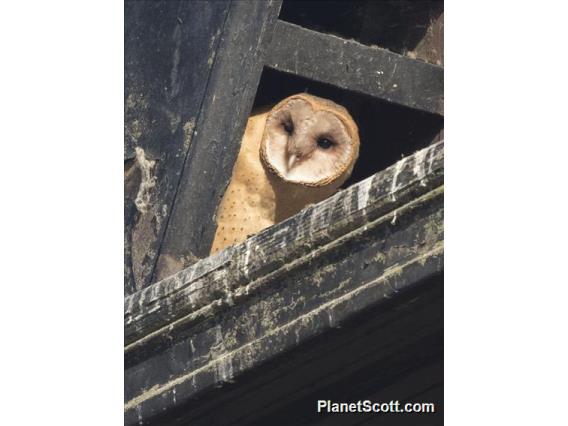American Barn Owl (Tyto furcata)

American Barn Owl (Tyto furcata)

American Barn Owl (Tyto furcata)

American Barn Owl (Tyto furcata)



×




American Barn Owl (Tyto furcata)

American Barn Owl (Tyto furcata)

American Barn Owl (Tyto furcata)
About American Barn Owl (Tyto furcata)
- Kingdom: Animals
- Phylum: Chordates
- Class: Birds
- Order: Owls And Nightjars
- Family: Barn Owl and Grass-owls
The American barn owl is usually considered a subspecies group and together with the western barn owl group, the eastern barn owl group, and sometimes the Andaman masked owl, make up the barn owl, cosmopolitan in range. The barn owl is recognized by most taxonomic authorities. A few separate them into distinct species, as is done here. The American barn owl is native to North and South America, and has been introduced to Hawaii.
Source: Wikipedia
Lifelists
Visits
-
2005-10-15
Don Edwards National Wildlife Refuge - Alviso, United States of AmericaIn nesting box at headquarters, might not be the correct date. -
-
2011-05-29
Del Puerto Canyon and Mines Road, United States of AmericaSeen after dark at the on-ramp to 580. -
2014-02-17
Heron's Head Park, United States of AmericaBird that looked to be flying like an owl was flying low to the ground back and forth over the marsh and the grasslands near the visitor center about 1 hour after sunset. -
-
2020-04-18
Bernal Hill, United States of America -
2020-04-18
Bernal Hill, United States of America -
2020-05-14
Bernal Hill, United States of AmericaSeen flying around the hill several times before finally flying over my head with a small mammal in its talons. Probably a Botta's Pocket Gopher. -
-
2020-08-20
Bernal Hill, United States of America -
2020-12-16
Talca, Chile -
-
-




